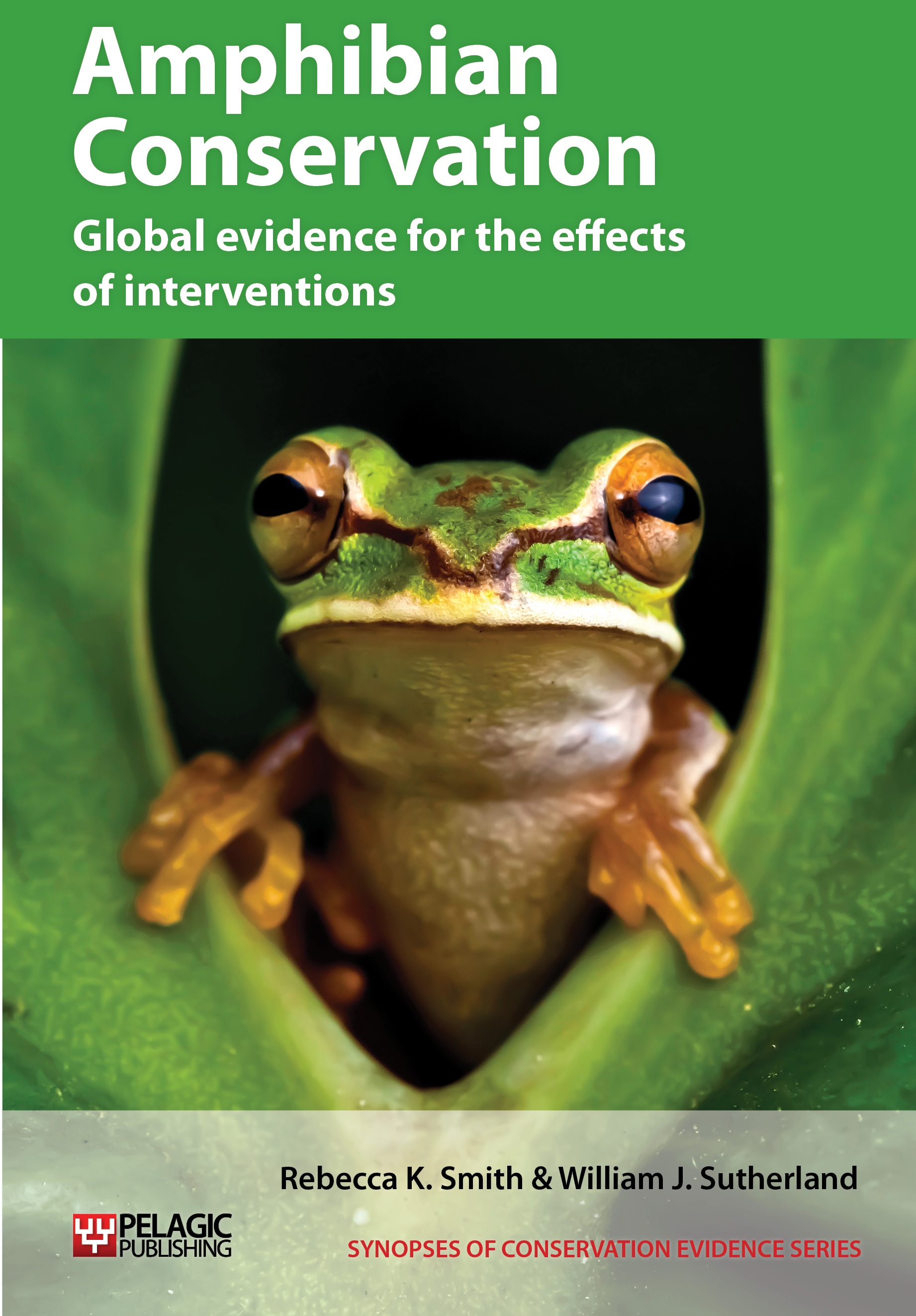Captive breeding harlequin toads (Atelopus species)
-
Overall effectiveness category Trade-off between benefit and harms
-
Number of studies: 6
View assessment score
Hide assessment score
How is the evidence assessed?
-
Effectiveness
44% -
Certainty
50% -
Harms
28%
Study locations
Supporting evidence from individual studies
A replicated study of captive Panamanian golden frogs Atelopus zeteki in the USA (Zippel 2002) found that the frogs bred successfully in captivity. Hundreds of offspring were bred in captivity and sent to other zoos in the breeding programme. Small assurance populations of the species were maintained and bred in case of extinction in the wild from threats that included chytridiomycosis. Captive-bred frogs were to be released if wild populations became extinct.
Study and other actions testedA review of captive breeding programmes in 2001–2007 of priority amphibian species from Panama at 50 zoos and aquariums in the USA (Gagliardo et al. 2008) found that Panamanian golden frogs Atelopus zeteki bred successfully in captivity. By 2007, 41 of 111 wild-caught Panamanian golden frogs Atelopus zeteki were surviving and there were over 1,500 frogs in the captive-breeding population. In 2001–2005, 111 Panamanian golden frogs were collected, including 26 pairs and 59 newly metamorphosed froglets. Strict quarantine and hygiene protocols were enforced. Animals were tested for chytrid and treated with Itraconazole.
Study and other actions testedA small, replicated study in 2011–2012 of captive harlequin toads Atelopus in Ecuador (Coloma & Almeida-Reinoso 2012) found that although one clutch of eggs was produced by each species, maintaining healthy adults, successfully breeding and rearing juveniles was difficult. One of three breeding attempts for elegant stubfoot toad Atelopus elegans and the one attempt for Pebas stubfoot toad Atelopus spumarius and Atelopus spumarius-pulcher complex resulted in a clutch of eggs. However, most Atelopus spumarius embryos were dead within eight days. This was considered by the authors to be due to a drop in water temperature one night. Three tadpoles survived the first month and just one over four months. Nineteen Atelopus spumarius-pulcher complex toadlets survived over eight months (from 500 eggs). Causes of death were unknown. Twenty adult elegant stubfoot toads, eight Pebas stubfoot toads and 30 Atelopus spumarius-pulcher complex were wild caught. Breeding tanks were 60 x 35 x 30 cm with stones, plants and an open system of filtered water. One of three female elegant stubfoot toads and one Pebas stubfoot toad were stimulated with human chorionic gonadotrophin (0.05 ml).
Study and other actions testedA replicated study in 2008–2011 of captive harlequin toads Atelopus flavescens at Cologne Zoo, Germany (Gawor et al. 2012) found that egg deposition was stimulated by maintaining toads in a drier environment followed by a period of intensive irrigation. However, no toadlets survived past day 142. Three breeding trials resulted in no egg production. Following the simulation of a dry then wet season, two clutches of eggs were produced with 400–500 eggs (5–10% unfertilized). On day 43 after egg deposition, only two larvae survived. One tadpole survived to day 112, the other died as a froglet at day 142. Males were housed in three groups of 12–15 in tanks (100 x 60 x 60 cm) with artificial streams. Four females were transferred to the tanks for breeding. Tanks were misted several times each day. A dry season with reduced water and misting was then simulated for three months followed by a wet season with increased water and misting.
Study and other actions testedA replicated study in 2006–2012 of amphibians at two breeding facilities in Panama (Gratwicke 2012) found that the majority of the priority conservation species bred successfully in captivity. At one breeding facility, 10 of the 15 priority amphibian species collected from chytrid-infected areas in 2006 reproduced in captivity, with varying success rates. This included the Panamanian golden frog Atelopus zeteki. At a second facility, captive Limosa harlequin frog Atelopus limosus, Toad Mountain harlequin frog Atelopus certus and Pirre Mountain frog Atelopus glyphus reproduced successfully. The Panama Amphibian Rescue and Conservation project, launched in 2009, aimed to establish assurance colonies of species in extreme danger of extinction and to reduce impacts of the chytrid fungus.
Study and other actions testedA replicated study in 2009–2012 of harlequin frogs Atelopus at Cali Zoo, Colombia (Silva 2012) found that toads bred and survived to metamorphosis in captivity. Eggs were laid in the first year, with each female producing 200–300 eggs. Tadpoles hatched within ten days. In 2009–2012 there were nine successful hatchings, eight of which fully metamorphosed. Seventeen adults, 10 males and seven females were collected from the wild in June 2009.
Study and other actions tested
Where has this evidence come from?
List of journals searched by synopsis
All the journals searched for all synopses
This Action forms part of the Action Synopsis:
Amphibian Conservation
Amphibian Conservation - Published 2014
Amphibian Synopsis





)_2023.JPG)














